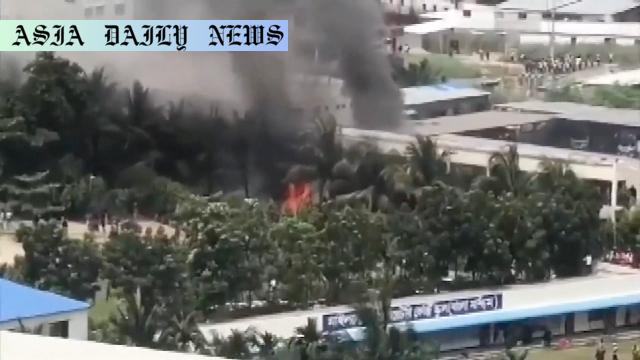Plane Crash: At least 31 dead, including children, in Bangladesh Air Force jet crash on school campus in Dhaka; investigation underway.
At least 31 people confirmed dead in a training jet crash.
Victims include many children under age 12; over 80 were injured.
The crash occurred on a school campus in Dhaka, Bangladesh.
Cause attributed to mechanical failure; investigations ongoing.

The Devastating Plane Crash in Dhaka: A Tragedy Unfolds
A shocking and devastating incident unfolded in Dhaka, Bangladesh, where at least 31 lives were lost following the crash of a Bangladesh Air Force training jet. The fighter jet plummeted onto the campus of Milestone School and College, igniting a wave of destruction and leaving a trail of devastation. The crash, which took place on a routine Monday, rippled through the lives of countless families, as many of the victims were children below the age of 12. The chaotic and tragic scenes that followed underscore the immense scope of the disaster that struck this bustling capital city of Bangladesh.
Children among the Victims: A Nation Grieves
Among those confirmed dead, children formed the majority of the count, plunging the entire nation into a collective state of grief. The children, who had just finished their school classes and were ready to return home for the day, became unintended victims of the jet’s tragic crash. With around 80 injured individuals still recovering in hospitals, the aftermath is felt even more profoundly. Local reports indicate that multiple families are tirelessly combing hospitals and the school grounds for any leads on their missing loved ones, painting a vivid and heart-wrenching picture of despair and hope intertwined.
Investigating the Mechanical Failure
Preliminary investigations revealed that the Bangladesh Air Force jet in question experienced a mechanical failure, ultimately leading to this catastrophic event. The pilot, along with numerous civilians, succumbed to the tragic consequences, leaving authorities and citizens searching for answers. Bangladesh’s interim government has vowed to investigate the matter comprehensively, ensuring that the root causes are uncovered to prevent future occurrences of such avoidable tragedies. Military officials are also grappling with accountability and examining whether maintenance protocols or operational issues could have contributed to the accident.
The Impact on Families and Communities
The emotional weight of this tragedy cannot be overstated. Parents, educators, and community members are sharing their grief, as this tragedy shakes the very foundation of safety within educational institutions. Many families who lost loved ones are looking to the government for reassurance, not only in terms of immediate support but also in implementing stricter measures for aviation safety. In Dhaka, a city already grappling with urban challenges, the loss of these lives is a stark reminder of the importance of institution-level vigilance, whether in aviation or public safety policies.
Calls for Safer Skies and Accountability
This horrific crash has reignited conversations about flight safety and accountability measures for military and governmental operations. Many experts argue that more streamlined and updated safety protocols are needed to avert repeat instances of such accidents. The loss of innocent young lives has also spurred greater calls for immediate changes in regulatory frameworks, emphasizing the importance of prioritizing human lives above all other considerations in both military and civil aviation.
Commentary
Reflection on the Dhaka Plane Crash
The recent Bangladesh Air Force jet crash in Dhaka is a profoundly saddening and heart-wrenching tragedy. As highlighted by the news, the loss of 31 lives, primarily children, underscores the devastating consequences of such incidents. The fact that young students—full of potential and promise—became accidental victims in what should have been an ordinary school day is deeply upsetting. One cannot begin to comprehend the grief and anguish felt by their families and communities. This incident serves as a stark reminder of the fragility of life and the unpredictable nature of accidents.
The Broader Implications of the Tragedy
Beyond its immediate impact, this incident sparks a necessary conversation on aviation safety and public accountability. Modern societies rely on advanced technology and rigorous safety protocols to minimize incidents like this. However, when mechanical failures lead to the loss of civilian lives, it points toward a deeper systemic issue that requires immediate attention. Military operations, while crucial for national security, need checks and balances to ensure they do not unknowingly pose risks to civilian lives. Transparency, in this regard, is a key requisite, and the investigation announced by the authorities should be both thorough and conclusive.
Empathy and Community Support in Crisis
Above all, moments like these remind us of the power of empathy and collective action. As families of the victims mourn, communities must rally together to offer support—whether psychological, financial, or emotional. While nothing can remedy the loss endured by the affected families, collective solace can help rebuild their strength and resilience over time. Moreover, this tragedy calls for global solidarity, as nations worldwide collaborate to share safety advancements and preventive measures to avoid similar occurrences elsewhere.


